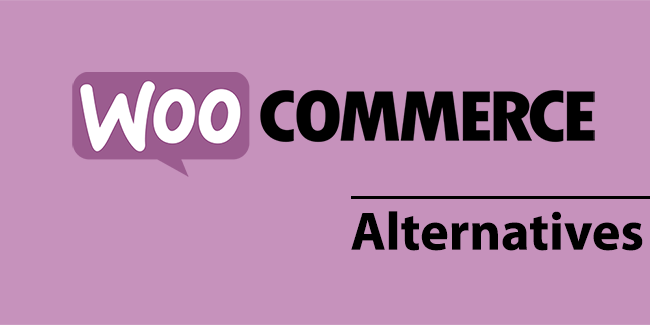How to Select a Sales Tech Stack for Your Company

This post will explain Sales and marketing tech stack. The expression “a craftsman is only as sound as his tools” is certainly familiar to you. In B2B sales, the same is true. To be productive, even the best salesperson in the world requires the correct software tools. As part of their sales tech stack, they require call management software, customer relationship management (CRM) technology, calendaring tools, analytics, and much more.
The sales rep can be more efficient and productive if the tools are of higher quality. The sales tech stack is a collection of software tools used by sales professionals to do their duties. While providing insight into hot prospects, sales tech stack software helps maximise productivity and automate numerous repetitive and tiresome processes such as email prospecting.
It also encourages internal collaboration by allowing sales people and management to share account information, as well as capturing critical data for areas like finance and customer service. In addition, the sales tech stack tracks account, customer, and prospect activity, creating data for analytics that indicate sales performance, customer patterns, and more.
The Sales Tech Stack’s Importance
Technology is transforming B2B sales by giving sales professionals greater data and allowing them to use it to drive the sales process. Customer pleasure is becoming more essential than sales quotas, and more account executives are turning to the sales tech stack to assist them in engaging with customers and promoting customer success. Also check Benefits of CRM in real estate.
Here are a few stats from Salesforce that demonstrate how technology is affecting sales:
- Customer satisfaction is ranked as the top KPI by 66 percent of sales teams, while “team [sales] quota reached” is ranked as the top KPI by 65 percent. • Top-performing sales teams are 1.5 times more likely to adopt data-driven projections.
- 76 percent of sales say analytics has helped them deliver a consistent customer experience across all sales channels.
- Collaborative selling has enhanced productivity by more than 25% for 60% of sales professionals, and 52 percent feel it has increased their funnel.
- According to 68 percent of sales professionals, having a single perspective of the customer across departments is crucial.
The sales tech stack has proven its worth in terms of increasing sales efficiency, improving internal and external communication, improving customer experience, and fostering Customer Success. Sales technology is also improving, allowing for even more productive sales performance.
- As more CRM software is hosted in the cloud, CRM technology continues to improve and become less expensive.
Cloud-based CRM is scalable and available to all employees, and you can add new features and functionalities without disturbing the sales process.
It has been established that having easy entrance to customer data improves sales performance. According to Nucleus Research, 65 percent of sales professionals at small and medium-sized businesses (SMBs) who utilise mobile CRM have met their sales quota, compared to 22 percent of those who don’t.
- Big data analytics has become easier to collect and evaluate thanks to cloud computing.
Product managers can analyse whether a product or service will perform well in a new market, and sales managers can make more realistic sales estimates.
Using the cloud to store data also facilitates collaboration and encourages more accurate consumer data.
According to research, if B2B sales professionals don’t have to comb through missing or erroneous customer data, they can save 27.3 percent of their time (or 546 hours).
- Sales automation is removing a great deal of the tedium from the sales process. Sales professionals only spend around a third of their time selling (35.2 percent). The rest of my period is spent on call records, email follow-ups, and other administrative activities.
The administration, in fact, consumes up to 14.8 percent of their time. Much of this activity may be automated with the help of the sales tech stack, allowing sales representatives to focus on more productive tasks.
Machine learning is also becoming increasingly crucial in sales. Artificial intelligence (AI) can be used to score leads, for example. AI is also being used to customise technology like chatbots, which is a top priority for 91 percent of businesses.
Selecting the Appropriate Tools for Your Sales Tech Stack
The correct sales tech stack software will boost sales volume and productivity. You can turn your sales crew into superstars if you use the appropriate tools. Choosing software that streamlines the sales process allows your company to gain a better understanding of consumer needs and helps your sales agents succeed.
Here are some things to think close when selecting your sales tech stack tools:
- Prospecting and lead qualifying – Sales prospecting is the most difficult element of sales, according to 40% of reps.
Your sales tech stack should include tools that make lead generation and qualification easier for reps so they can focus on what they’re paid to do: sell. Routine chores like list development, email marketing, and lead qualification may all be automated. Also check B2B SaaS marketing strategy
Lead scoring software also assists in the prioritisation of leads for follow-up and sales calls.
CRM software is one of the most powerful tools in the sales tech stack. Sixty-four percent of sales use CRM software. CRM technologies have been shown to generate a 245 percent return on investment, including converting 79 percent more leads and boosting customer retention by 26%.
- Integration and cooperation – Choose software that is easy to integrate and exchange real-time data within the sales team as well as with other departments like finance and customer care.
You’ll need applications that interact with Office 365 and email providers so you can keep track of communications and extract data for reporting.
- Analytics – For performance metrics and analytics, your sales technology stack should be the single, authoritative source of data.
Data from the sales tech stack should expose sales workflow bottlenecks and give accurate, consistent forecasting and performance monitoring insights.
- Usability – The interface must be straightforward and simple to use, and most importantly, it must be useful to the sales team.
CRM implementations, for example, fail when they are chosen for managers to supervise sales and collect data rather than to make the job of the account executive easier. Any sales tech stack that encounters user opposition is doomed. To avoid the work of developing a tech stack, consider outsourcing your sales team.
Because the cost of software licence and training can add a significant amount of overhead to your sales operation, more companies are outsourcing their inside sales teams to avoid having to maintain their own sales tech stack.
Prospecting, lead generation, and qualifying are all incredibly cost-effective when outsourced; you get to leverage your outsourced sales partner’s tech stack while reaping the benefits of the outcomes and data without having to hire additional people or maintain more software.
Using the correct sales software tools can help your sales professionals thrive at what they do by removing friction from the sales process.
The correct sales tech stack smooths out the sales process, and the more sales tech resources you can outsource, the more time your in-house team has to focus on what they do best: selling.




